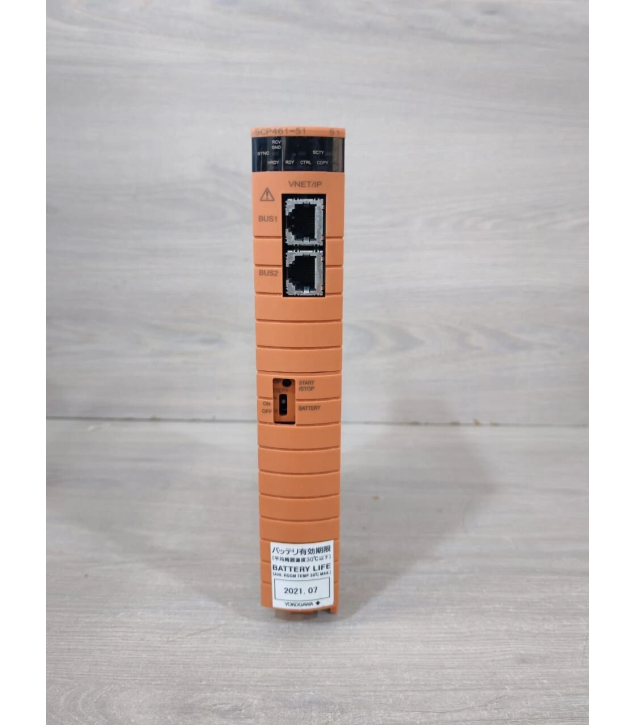Yokogawa SCP451-51
The Yokogawa SCP451-51 is a safety barrier widely used in process control systems, designed to ensure safe signal transmission between hazardous areas (e.g., explosive environments) and safe zones in industrial automation setups. Its primary function is to isolate, limit current and voltage, thereby protecting personnel and equipment.
Key Functions & Purposes
- Signal Isolation: Separates electrical signals between field devices in hazardous areas (such as sensors and transmitters) and control systems (like DCS or PLC) in safe zones, preventing energy transfer that could cause hazards.
- Explosion Protection: Incorporates current and voltage limiting circuits to ensure energy levels in hazardous areas do not reach ignition thresholds for explosive mixtures, complying with international standards (e.g., IECEx, ATEX).
- Signal Integrity: Maintains accurate transmission of analog signals (typically 4-20mA) while providing isolation, ensuring reliable monitoring and control by the system.
Model Interpretation (Speculative)
The model designation likely encodes specific attributes:
- SCP: Indicates the product series, representing Yokogawa's line of isolation safety barriers.
- 451: Denotes the base model, possibly specifying signal type (e.g., 4-20mA) and isolation configuration.
- 51: May refer to additional features, certification levels, or power specifications (e.g., explosion-proof rating, power supply options).
Typical Specifications (Reference to Similar Models)
- Signal Type: Supports 4-20mA analog signals with bidirectional isolation.
- Isolation: Three-way isolation (power, input, output) with isolation voltage up to 2.5kV or higher.
- Certifications: Likely compliant with ATEX, IECEx, suitable for Zone 0/1/2 hazardous locations.
- Power Supply: Typically 24V DC, with low power consumption.
- Operating Temperature: Generally -20°C to +60°C, suitable for industrial environments.
Applications
Commonly used in industries such as oil and gas, chemical processing, pharmaceuticals, and other sectors with explosive risks. It connects field transmitters (e.g., pressure, temperature, flow) in hazardous areas to control systems in safe zones, ensuring secure signal transmission while preventing ignition sources.
Considerations
- Installation must adhere to explosion-proof regulations, ensuring correct wiring and proper sealing.
- Verify parameters (signal type, explosion rating) match on-site requirements during selection.
- Power off before maintenance to avoid equipment damage or safety risks.
For detailed technical documents (manuals, datasheets), visit the Yokogawa official website or contact their technical support.



